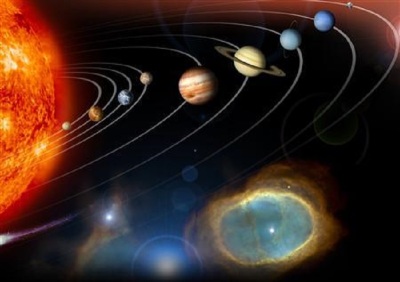Blind Faith: Is It in Christianity or Science?

It is invariably Christians who are asked to account for the miraculous foundation of their faith by non-religionists. Almost always the awkward reply from the devout has been to sheepishly admit that their belief in the existence of an omnipotent supreme being is something beyond proof, science or pure reason. It can only come, they acknowledge, from the wellspring of sheer faith. The head-scratching facet of this debate, however, is that while Christianity does in fact encompass the supra-natural and inexplicable within its doctrine, it is hardly religion that is the true world-class purveyor of miracles; it is the very atheist complainants who themselves are steeped in some mind-boggling scientific dogma of their own.
Granted, that electromagnetic energy should have come into being by the simple command of "let there be light" is indeed sufficiently difficult to embrace. It is nothing though compared to what billions happily accept concerning the conventional view regarding the creation of the cosmos: Earth, Moon, Sun, the Milky Way and 100 billion other galaxies squeezed together in the beginning within a volume smaller than a proton. Those who chortle at the idea of Jonah spending three days within the bowels of a great fish have no compunction whatever in acknowledging that one teen-aged twin sent on an interstellar voyage at close to light speed for what should seem but a few years should return to Earth to find his brother already collecting social security and not far from death's door due to age. Virgin births, water converted to wine and life restored to the dead are truly no great leaps of faith compared to the Big Bang, relativity and quantum mechanics.
The incontrovertible truth is that at the heart of almost every single foundational constant of the universe we find that it is balanced on the most astoundingly implausible — impossible, actually —razor's edge. Our universe seems to be fairly screaming at us that it was engineered in some way, however it came to be. Helium, for example, is fused in the core of stars, with 0.0068 of the mass of its constituent particles converted to energy in the process. If that measure, called "epsilon," were 0.0060 only hydrogen could exist and the heavier elements would be nonexistent. Altering the weight of neutrons by even 1/7 of 1 percent, either heavier or lighter, would make what happened in stellar cores cease to matter since stars as we know them wouldn't exist.
Christians—as well as non-believers—should be apprised of the true miracles that swirl around them: 26 jaw-droppingly fine-tuned physical constants of the cosmos, any one of which dialed a hair's breadth's differently would have given birth to a universe inimical to life. Mathematicians and physicists have calculated the astonishing probability that all 26 should have randomly struck the same inconceivably infinitesimal bulls-eye. There is no name for this number since it has some four dozen zeros within the digit. For those who would care to attempt to ponder this actual miracle, the odds are a trillionth of a trillionth of a trillionth of a billionth of one percent. Yet, even this unfathomable fact isn't the most eye-brow raising for those willing to view the true face of reality. Just that there is even a single gram of matter in our entire universe in yet another staggering miracle.
Even before the first second of time ticked away after the Big Bang, some of that incomprehensible flash of energy was transformed into primordial pairs of quarks and anti-quarks, the original matter of the cosmos. But matter and anti-matter annihilate each other, so a second unimaginably powerful explosion took place as all the duos of particles in the infant universe immediately consumed themselves. There should be nothing therefore in our cosmos; that there is rests only upon the most amazing manipulation, turning the unattainable into reality. There were 1,000,000,001 particles of matter created for every 1,000,000,000 particles of anti-matter—even though that is technically impossible, a violation of the laws of physics. Nonetheless, everything that exists is composed of the one out of a billion motes of ashes of this explosion, the insignificant remnants of what should have been completely and thoroughly exhausted, but somehow wasn't. To be clear, this "CP violation" has been solved recently and can be grasped by anyone who understands eigenvectors, Yakawa couplings and non-perturbative hadronic parameters. For the rest of us, the term "miracle" is probably just as accurate as anything else.
Scientists who eschew a divine mover to explain all of this are constrained to enter into some outrageously "religious" territory as well in order for any of the foregoing to make any sense at all. Without a godly creator one must advance protocols equally impossible, or even more so: an infinite number of universes, M-theory employing strings so small that even to see them would require magnification such that an atom would appear the size of our Solar System, and discarding our normal space—up and down, back and forth, and side to side— for ten, eleven or even twenty six dimensions.
Christians can't prove their faith is true and accurate. However, compared to the stupefying, confounding and mind-altering tenets of those cynics demanding such proof, the truth is that there are far more difficult constructs to consider than the New Testament.
David Nabhan is a science writer and NEWSMAX columnist, "Shaking Up Science." Web site: www.earthquakepredictors.com Contact: davidwrites100@aol.com




























